 February 1, 2018 John E. Ross, KD8IDJ, Editor
| ||||||
ARRL Hudson Division Director Promotes Amateur Radio Parity Act Before Senate Committee ARRL Hudson Division Director Mike Lisenco, N2YBB, testified on January 25 before a session of the Senate Committee on Commerce, Science, and Transportation regarding Amateur Radio's readiness to respond in an emergency. The session, "This is not a Drill: An Examination of Emergency Alert Systems," was called in the wake of an incoming missile warning erroneously released in Hawaii in January. Lisenco said Amateur Radio played a role not only in responding to the warning but in disseminating word that the missile alert had been issued by mistake.
"The phone lines into the State EOC were soon overwhelmed and congested, and the website was overwhelmed with public inquiries," he said. Lisenco said that in such situations, Amateur Radio volunteers are typically present at state or county EOCs and at the State Warning Point, the Hawaii Emergency Management Agency. He pointed out that the cancellation of the false warning circulated on various information outlets 13 minutes after the missile warning went out. "That was picked up and relayed through the Amateur Radio networks," he told the Committee in written testimony. "The cell phone alert system could not be used for the cancellation notice until prior FEMA approval was obtained. Once that was obtained, the cancellation alert went out to the cell phone network after 38 minutes from the initial alert." "Many people had received the warning first on their cell phones through the Wireless Emergency Alert (WEA) system, but a cancellation on that same system was substantially delayed," Lisenco said. "The result was that Amateur Radio networks disseminated validated cancellation information long before the cellular networks were able to do so." Lisenco took the opportunity to address how private land-use regulations can preclude Amateur Radio disaster response capabilities. "There is no substitute for the ready availability of a residential Amateur Radio station in daily operation from a licensee's residence," he said. "The licensee cannot be expected to have the ability to communicate into or from a disaster site unless he or she has a station with an effective outdoor antenna capable of operation on multiple frequency bands at once, which is ready to be pressed into service from the licensee's residence at a moment's notice."
Mississippi Senator Roger Wicker, a cosponsor with Connecticut Senator Richard Blumenthal, of the Amateur Radio Parity Act, attended the hearing. Responding to a question from Wicker at the hearing, Lisenco pointed out that an early US Coast Guard warning cancellation notice was relayed to Amateur Radio networks and disseminated quickly, while the State Warning Point waited to obtain FEMA authorization to rescind the warning via cellular phones. As a result, Amateur Radio networks were able to disseminate validated cancellation information long before the cellular networks could. Wicker issued a statement noting Lisenco's testimony and posted a video clip of his exchange with Lisenco. Read more. ARRL Comments on Technological Advisory Council Spectrum Policy Recommendations In comments to the FCC on a series of Technological Advisory Council (TAC) spectrum management policy recommendations, ARRL said that while some of the Council's recommendations are valid, it would be "highly inappropriate" to generalize about applying them broadly in all radio services. The comments, filed on January 31, were in response to a December 1, 2017, Public Notice in ET Docket No. 17-340. ARRL took the opportunity to strongly urge the FCC to reinstate a 2016 TAC noise floor study, which, ARRL asserted, was apparently terminated before it even got started.
ARRL reiterated its encouragement for the FCC to incorporate receiver performance specifications into US spectrum policy on a broader basis. "ARRL accepts...that increased spectrum user density is the inevitable result of new wireless services," the League said. "Given that this intensification of the use of the radio spectrum will necessitate new overlays of dissimilar radio services...in increasingly shared spectrum, it is necessary to depart from the traditional regulatory model that the Commission has utilized for spectrum allocations." That model, ARRL said, has, almost without exception, placed limits only on transmitters, while the inability of some receivers to reject out-of-band signals "constrains new allocations in adjacent bands." This calls for what ARRL called "a 'holistic' approach to transmitter and receiver performance." "Requiring better performance from receivers or RF-susceptible devices is a valid, reasonable, and long overdue requirement," ARRL said, "but the major goal of doing so should be to prevent instances of interference, not solely to allow the overlay of otherwise incompatible sharing partners in deployed spectrum to the detriment of incumbents." ARRL argued, however, that the Amateur Service should not be subject to receiver immunity standards, because licensees employ a wide range of propagation, emissions, bandwidths, power levels, receivers, and antennas, making any receiver performance standards arbitrary, and compromising the Service's experimental nature. They are also able to differentiate between interference from nearby spurious or out-of-band signals and that caused by receiver deficiencies. "Receiver immunity is not an intra-service issue in the Amateur Service," ARRL said. "The issue...is, rather, protection from spurious and out-of-band emissions from other services." ARRL said that while the TAC's allocation principles include over-generalizations, the Council is "very much on the right track" with such concepts as receiver immunity standards for certain radio services and, especially, for consumer electronics "and the initiation of necessary and urgent programs, such as interference-hunting teams, to supplement the Commission's meager enforcement resources." ARRL said it looks forward to working with the FCC in developing an interference-tracking corps. ARRL also supported the creation of a public database of past radio-related enforcement activities. What little FCC enforcement is necessary in the Amateur Service must be timely and visible, ARRL said. But, ARRL returned to its assertion that a knowledge database regarding ambient noise levels in certain environments must be in place before adopting any next-generation spectrum management techniques. "No system of spectrum management incorporating [harm claim thresholds] and receiver immunity levels can be accurately implemented" without the noise study data, ARRL said. Read more. ARRL to Offer Expanded Orlando HamCation® Presence February 9-11 ARRL will be represented in force and with an expanded presence at Orlando HamCation on February 9-11. The event, which is also the 2018 ARRL Florida State Convention, takes place at the Central Florida Fairgrounds and Expo Park. Team ARRL will include Headquarters staff and volunteers. ARRL concessions at HamCation will support membership, publication sales (ARRL store), the ARRL Southeastern Division, the ARRL Collegiate Amateur Radio Initiative, and QSL card checking for DXCC and other ARRL Awards. The League will offer special incentives for visitors who join or renew ARRL membership at the booth.
Expected to be on hand are ARRL Puerto Rico Section Manager Oscar Resto, KP4RF, and US Virgin Islands Section Manager Fred Kleber, K9VV. At HamCation, Resto and Kleber will accept the 2018 International Humanitarian Award on behalf of radio amateurs in Puerto Rico and the US Virgin Islands, who aided in relief and recovery after a punishing Atlantic hurricane season. ARRL President Rick Roderick, K5UR, will head the ARRL team at HamCation. An ARRL Membership Forum, moderated by ARRL Southeastern Division Director Greg Sarratt, W4OZK, will take place on Saturday, while Andrew Milluzzi, KK4LWR, will lead the Collegiate Amateur Radio forum, discussing topics related to ham radio clubs at colleges and universities. Topics will include activities, recruitment, connecting with alumni, and social media. "Bring your school colors to hang in the ARRL exhibit area," Milluzzi said. "We'll display your college pennant, flag, or banner to show off the representation of college and university radio clubs." ARRL Volunteer Examiners will administer license examinations given on Friday and Saturday. Advance registration is required. Contact Val Jacyno, AK4MM. Read more. The Doctor Will See You Now! "Automatic Gain Control" is the topic of the latest (February 1) episode of the "ARRL The Doctor is In" podcast. Listen...and learn!
Every 2 weeks, your host, QST Editor-in-Chief Steve Ford, WB8IMY, and the Doctor himself, Joel Hallas, W1ZR, will discuss a broad range of technical topics. You can also e-mail your questions to doctor@arrl.org, and the Doctor may answer them in a future podcast. Enjoy "ARRL The Doctor is In" on Apple iTunes, or by using your iPhone or iPad podcast app (just search for "ARRL The Doctor is In"). You can also listen online at Blubrry, or at Stitcher (free registration required, or browse the site as a guest) and through the free Stitcher app for iOS, Kindle, or Android devices. If you've never listened to a podcast before, download our beginner's guide. Nominations Sought for Philip J. McGan Memorial Silver Antenna Award Nominations are open for ARRL's annual Philip J. McGan Memorial Silver Antenna Award, which recognizes and honors the efforts of individuals who create greater awareness and understanding of the services and benefits that Amateur Radio provides to the general public. The deadline to submit a nomination is May 19, 2018.
The award is named for journalist Philip J. McGan, WA2MBQ (SK), the first chairman of ARRL's Public Relations Committee, who helped reinvigorate the League's commitment to public relations. Unfortunately, McGan never got to see how well his efforts paid off. To honor him, his friends in the New Hampshire Amateur Radio Association joined with the ARRL Board of Directors to pay a lasting tribute to the important contributions he made on behalf of Amateur Radio. The McGan Award will go to the radio amateur who has demonstrated success in Amateur Radio public relations and who best exemplifies McGan's volunteer spirit. Activities for which the McGan Award is presented include efforts specifically directed at focusing the media's and the general public's attention on the value of Amateur Radio. This may include traditional methods, such as generating media coverage of a specific event, or non-traditional methods, such as hosting a radio show or being an active public speaker.
The award is given only to an individual, who must be a full ARRL member in good standing at the time of nomination. The nominee must not be compensated for any public relations work involving Amateur Radio (including payment for articles) and may not be a current officer, Director, Vice Director, paid staff member, or a member of the current selection committee. The specific criteria for nomination and the nomination form (in PDF format) are posted on the ARRL website, or e-mail Dave Isgur at ARRL Headquarters and ask for a McGan Award entry form. Read more. Kristen McIntyre, K6WX, Appointed ARRL Pacific Division Vice Director Kristen McIntyre, K6WX, of Fremont, California, has been appointed Pacific Division Vice Director, ARRL President Rick Roderick, K5UR, has announced. The appointment came upon the recommendation of Director Jim Tiemstra, K6JAT, who succeeded longtime Pacific McIntyre, who has served as ARRL Technical Coordinator for the East Bay Section, says on her QRZ.com profile that she's been interested in radio since she was about 5 years old. She got her Technician license in the late 1970s while a student at Massachusetts Institute of Technology. After letting her license expire, she re-licensed and obtained her Amateur Extra-class license. She is also licensed in Japan, her second home, as JI1IZZ. She is president of the Palo Alto Amateur Radio Association and is currently a senior software engineer at Apple. Anticipated New Building Won't Be Ready for Hamvention 2018, but Flea Market Could Expand Due to circumstances beyond their control, Hamvention® 2018 organizers are reluctantly walking back an earlier announcement that a new building would be available for this year's event at the Greene County Fairgrounds and Expo Center in Xenia, Ohio.
On the plus side, he continued, Hamvention 2018 will have more room for inside exhibits, with the addition of the vacated Furniture Building, and the Flea Market may gain new space as well. "After consultation with professionals, we are in the process of solving the mud issue in the Flea Market area," Cramer said. "We anticipate work to start as soon as weather allows. We are rearranging the soccer field parking to eliminate use of the low areas where we had problems last year."
"There are many new ideas we are working on to make your stay with us more enjoyable," Cramer added. "Keep watching our website for updates." -- Thanks to Hamvention General Chair Ron Cramer, KD8ENJ Work Progressing to Incorporate CQ Magazine's WAZ Award Program into LoTW Beta testing for bringing CQ Magazine's Worked All Zones (WAZ) award program into ARRL's Logbook of The World (LoTW) system continues to move forward, officials from CQ and ARRL assured this week.
Beta testing will continue until this background task completes. When all WAZ accounts have populated, LoTW-WAZ will be made available to everyone. "The goal is for Amateur Radio operators to be able to directly submit LoTW confirmations for WAZ credit," ARRL and CQ said in a joint statement. "Standard LoTW credit fees and separate CQ award fees will apply." Logbook of The World is ARRL's electronic confirmation system for Amateur Radio contacts. It provides a confirmation when both stations in a contact submit their logs to the system and a match between the logs is confirmed. LoTW has supported the CQ WPX Award program since 2012. Canadian Radio Amateur Finds Resurrected NASA Satellite When he's not on ham radio, Scott Tilley, VE7TIL, an amateur astronomer, hunts spy satellites. Using an S-band radio from his home in Roberts Creek, British Columbia, Tilley routinely scans the skies for radio signals from classified objects orbiting Earth, according to a recent article on Spaceweather.com. Earlier this month, he saw the signature of IMAGE (Imager for Magnetopause-to-Aurora Global Exploration), a NASA spacecraft believed to have died in December 2005. The discovery has delighted space scientists.
"The long gone and nearly forgotten IMAGE spacecraft has come back to life and been detected by an amateur astronomer," said Mission Manager Richard J. Burley at NASA's Goddard Space Flight Center (GSFC), which confirmed that what Tilley spotted is, indeed, IMAGE. Amateur observer Paul Marsh, M0EYT, in the UK, provided the first independent confirmation of the IMAGE signal. NASA said on January 29 that observations from five sites were consistent with the RF characteristics expected of IMAGE. But just to make certain beyond a shadow of a doubt, scientists at Johns Hopkins Applied Physics Lab collected telemetry from the satellite that identified the spacecraft as IMAGE. A NASA team has been able to read some basic housekeeping data from the spacecraft and will continue to analyze data from the spacecraft to learn more about its condition. This will require adapting old software and information databases to more modern systems.
After the spacecraft went silent, an unsuccessful 2007 effort was made to track IMAGE in the hope that a "long shadow encounter" would drain the battery enough to cause IMAGE to reset its control hardware. When that effort failed, the mission was declared to have ended. Space scientists now theorize that an even longer eclipse -- or other event -- did reset the system and bring the transmitter back to life. Launched in 2000 on a mission to monitor space weather, IMAGE mapped plasma patterns around Earth, keeping tabs on the planet's magnetosphere as it responded to solar activity; on-board ultraviolet cameras shot images of Earth's auroras. "It had capabilities that no other spacecraft could match -- before or since," said Patricia Reiff, a member of the original IMAGE science team at Rice University. Reiff said UC Berkeley still has a ground station that was used for real-time tracking and control and is scrambling to find the old software to see it they can get the spacecraft to respond. "[IMAGE's] global-scale auroral imager would be fantastic for nowcasting space weather," Reiff said. "Fingers crossed!" -- Thanks to Alex Schwarz, VE7DXW; Spaceweather.com; NASA In Brief...
The K7RA Solar Update Tad Cook, K7RA, Seattle, reports: Low solar activity continues, with no sunspots seen January 20-29, and a sunspot number of 13 for January 30-31. Average daily solar flux declined marginally from 70 to 69.1. Predicted solar flux is 69 on February 1-3; 68 on February 4-7; 70 on February 8-22; 69 on February 23-March 4, and 70 on March 5-17.
Joe Flamini, W4BXG, in Virginia wrote to report his surprise at hearing -- and working -- two mobile stations on 10 meters on January 27 at about 1500 UTC. "I reached out and had a 45-second QSO with them both before the link faded," he said. "That'll never happen again!" Sunspot numbers for January 25-31 were 0, 0, 0, 0, 0, 13, and 13, with a mean of 3.7. The 10.7-centimeter flux was 70.3, 69.8, 68.8, 68.5, 68.2, 68.9, and 69.2, with a mean of 69.1. Estimated planetary A indices were 10, 8, 6, 4, 4, 5, and 7, with a mean of 6.3. Estimated mid-latitude A indices were 9, 7, 5, 2, 3, 3, and 5, with a mean of 4.9. Send me your reports and observations! Just Ahead in Radiosport
See the ARRL Contest Calendar for more information. For in-depth reporting on Amateur Radio contesting, subscribe to The ARRL Contest Update via your ARRL member profile e-mail preferences. Upcoming ARRL Section, State, and Division Conventions
Find conventions and hamfests in your area.
. .
Subscribe to...
Free of charge to ARRL members...
Find ARRL on Facebook! Follow us on Twitter, Snapchat @ARRLHQ, and Instagram! | ||||||
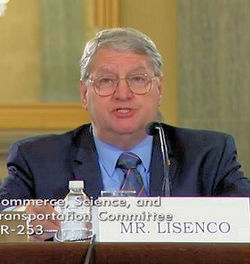 Lisenco said the Hawaii Radio Amateur Civil Emergency Service (RACES) activated on UHF and via a VHF inter-island repeater network, and amateur stations monitored the alert and cancellation activity, which came less than 1 day after RACES had completed an Amateur Radio communication exercise at the State Emergency Operations Center (EOC). In his written testimony, Lisenco recounted that the situation after the missile warning in Hawaii was chaotic.
Lisenco said the Hawaii Radio Amateur Civil Emergency Service (RACES) activated on UHF and via a VHF inter-island repeater network, and amateur stations monitored the alert and cancellation activity, which came less than 1 day after RACES had completed an Amateur Radio communication exercise at the State Emergency Operations Center (EOC). In his written testimony, Lisenco recounted that the situation after the missile warning in Hawaii was chaotic.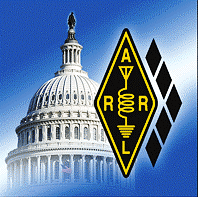 Lisenco reminded the panel members that the Amateur Radio Parity Act of 2017 is now pending before the Committee. "We are in desperate need of this legislation, and without it, the volunteer emergency communications services provided by Amateur Radio will be precluded. We urge the Committee in the strongest terms to please approve and send this legislation forward without delay," Lisenco said.
Lisenco reminded the panel members that the Amateur Radio Parity Act of 2017 is now pending before the Committee. "We are in desperate need of this legislation, and without it, the volunteer emergency communications services provided by Amateur Radio will be precluded. We urge the Committee in the strongest terms to please approve and send this legislation forward without delay," Lisenco said..jpg) "Indeed, it is difficult to imagine how the Commission can now...suggest the adoption of specific spectrum management principles, incorporating such concepts as receiver immunity, HCTs [harm claim thresholds], and interference temperature determinations without having...a firm grasp on ambient noise levels in basic RF environments and geographical areas," the League told the FCC.
"Indeed, it is difficult to imagine how the Commission can now...suggest the adoption of specific spectrum management principles, incorporating such concepts as receiver immunity, HCTs [harm claim thresholds], and interference temperature determinations without having...a firm grasp on ambient noise levels in basic RF environments and geographical areas," the League told the FCC..jpg) Among the new books HamCation attendees can purchase are the 2018
Among the new books HamCation attendees can purchase are the 2018  Sponsored by
Sponsored by 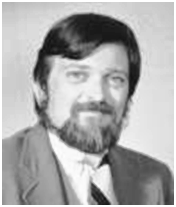 Every day, Public Information Coordinators, Public Information Officers, and other public relations volunteers strive to keep Amateur Radio visible in their communities by publicizing and promoting special events to the media, by maintaining good relations with local news outlets, creating content for social media, as well as many other valuable activities. These efforts benefit us all.
Every day, Public Information Coordinators, Public Information Officers, and other public relations volunteers strive to keep Amateur Radio visible in their communities by publicizing and promoting special events to the media, by maintaining good relations with local news outlets, creating content for social media, as well as many other valuable activities. These efforts benefit us all. A candidate's work must fit the definition of public relations, i.e., getting a message out to people. (public service is about providing a service.) The McGan Award recognizes the promotion of Amateur Radio to the non-amateur community, not for work within a club or organization that primarily benefits the Amateur Radio community.
A candidate's work must fit the definition of public relations, i.e., getting a message out to people. (public service is about providing a service.) The McGan Award recognizes the promotion of Amateur Radio to the non-amateur community, not for work within a club or organization that primarily benefits the Amateur Radio community.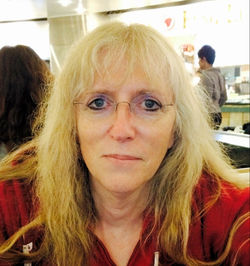 Division Director Bob Vallio, W6RGG, upon Vallio's election as ARRL Second Vice President.
Division Director Bob Vallio, W6RGG, upon Vallio's election as ARRL Second Vice President..JPG) "Despite all of the best efforts and intentions by Greene County, the Greene County Agricultural Society, and Hamvention, we have learned the anticipated new building will not be constructed in time for Hamvention 2018," Hamvention General Chair Ron Cramer, KD8ENJ, said. "The prefab sections bid on and architecturally required are currently backlogged. We expect construction to be delayed until after our show and the Greene County Fair." Cramer said construction should be completed this year in time for Hamvention 2019. "We regret this; however, it is well out of our control," Cramer said.
"Despite all of the best efforts and intentions by Greene County, the Greene County Agricultural Society, and Hamvention, we have learned the anticipated new building will not be constructed in time for Hamvention 2018," Hamvention General Chair Ron Cramer, KD8ENJ, said. "The prefab sections bid on and architecturally required are currently backlogged. We expect construction to be delayed until after our show and the Greene County Fair." Cramer said construction should be completed this year in time for Hamvention 2019. "We regret this; however, it is well out of our control," Cramer said. A revised exit plan and additional off-site parking are also in the works, along with easy-to-use maps to help visitors navigate. Parking and shuttles will be free. Talk-in also has new equipment and a taller tower to extend its reach.
A revised exit plan and additional off-site parking are also in the works, along with easy-to-use maps to help visitors navigate. Parking and shuttles will be free. Talk-in also has new equipment and a taller tower to extend its reach.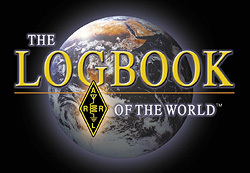 Some problems in the implementation were discovered by testers and have since been corrected; the documentation has also been improved by feedback from the testers. In parallel, the LoTW server has been executing a background task that creates and populates a WAZ account for each LoTW user.
Some problems in the implementation were discovered by testers and have since been corrected; the documentation has also been improved by feedback from the testers. In parallel, the LoTW server has been executing a background task that creates and populates a WAZ account for each LoTW user.
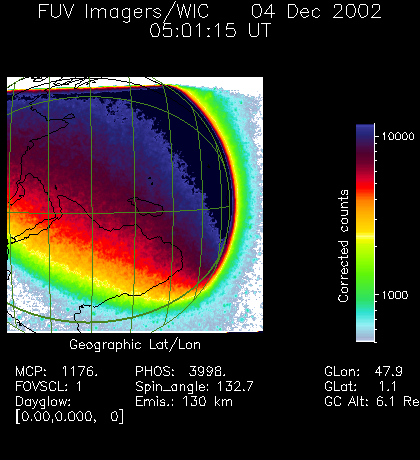
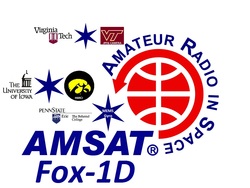 AMSAT Vice President-Operations Drew Glasbrenner, KO4MA, has declared that
AMSAT Vice President-Operations Drew Glasbrenner, KO4MA, has declared that 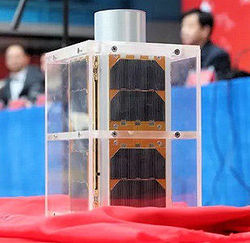 China's "Zhou Enlai" CubeSat, launched on January 19, is the country's first to involve primary and middle school students. Named in honor of the first Premier of the People's Republic of China, Zhou Enlai, the CubeSat was developed in Huai'an Youth Comprehensive Development Base in Jiangsu Province. The 2 kg, 2U CubeSat carries an Amateur Radio FM transponder and has SSTV capability, in addition to a high-definition optical camera. An SSTV beacon will post date, time, temperature, and location information on an SSTV frame. The launch was the 100th orbital launch attempt from the Jiuquan Satellite Launch Center. The Amateur Radio transponder has a downlink at 436.950 MHz, and an uplink at 145.930 MHz. Telemetry will be 9.6 k BPSK on 437.350 MHz. Read
China's "Zhou Enlai" CubeSat, launched on January 19, is the country's first to involve primary and middle school students. Named in honor of the first Premier of the People's Republic of China, Zhou Enlai, the CubeSat was developed in Huai'an Youth Comprehensive Development Base in Jiangsu Province. The 2 kg, 2U CubeSat carries an Amateur Radio FM transponder and has SSTV capability, in addition to a high-definition optical camera. An SSTV beacon will post date, time, temperature, and location information on an SSTV frame. The launch was the 100th orbital launch attempt from the Jiuquan Satellite Launch Center. The Amateur Radio transponder has a downlink at 436.950 MHz, and an uplink at 145.930 MHz. Telemetry will be 9.6 k BPSK on 437.350 MHz. Read 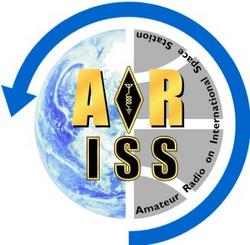 The Amateur Radio on the International Space Station (
The Amateur Radio on the International Space Station (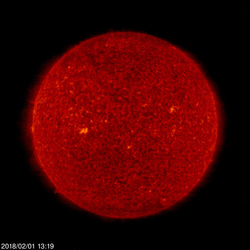 The predicted planetary A index is 5 on February 1-3; 10 and 8 on February 4-5; 5 on February 6-8; 8, 12, and 8 on February 9-11; 5 on February 12-14; 8, 12, 8, 10, 5, 8, 10, and 8 on February 15-22; 5 on February 23-March 2; 8 on March 3-4; 5 on March 5-7; 8, 12, and 8 on March 8-10; 5 on March 11-13, and 8, 12, 8, and 10 on March 14-17.
The predicted planetary A index is 5 on February 1-3; 10 and 8 on February 4-5; 5 on February 6-8; 8, 12, and 8 on February 9-11; 5 on February 12-14; 8, 12, 8, 10, 5, 8, 10, and 8 on February 15-22; 5 on February 23-March 2; 8 on March 3-4; 5 on March 5-7; 8, 12, and 8 on March 8-10; 5 on March 11-13, and 8, 12, 8, and 10 on March 14-17.







